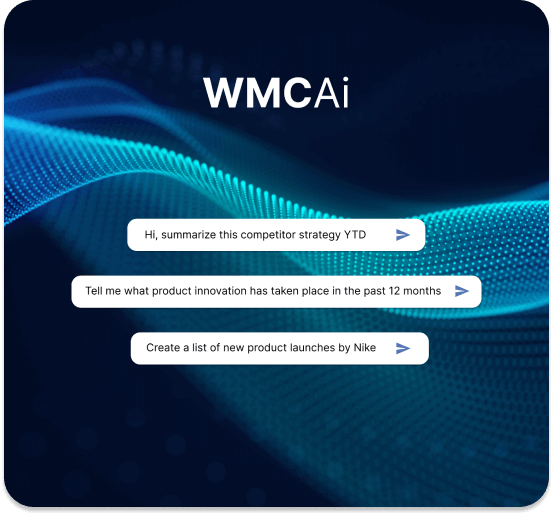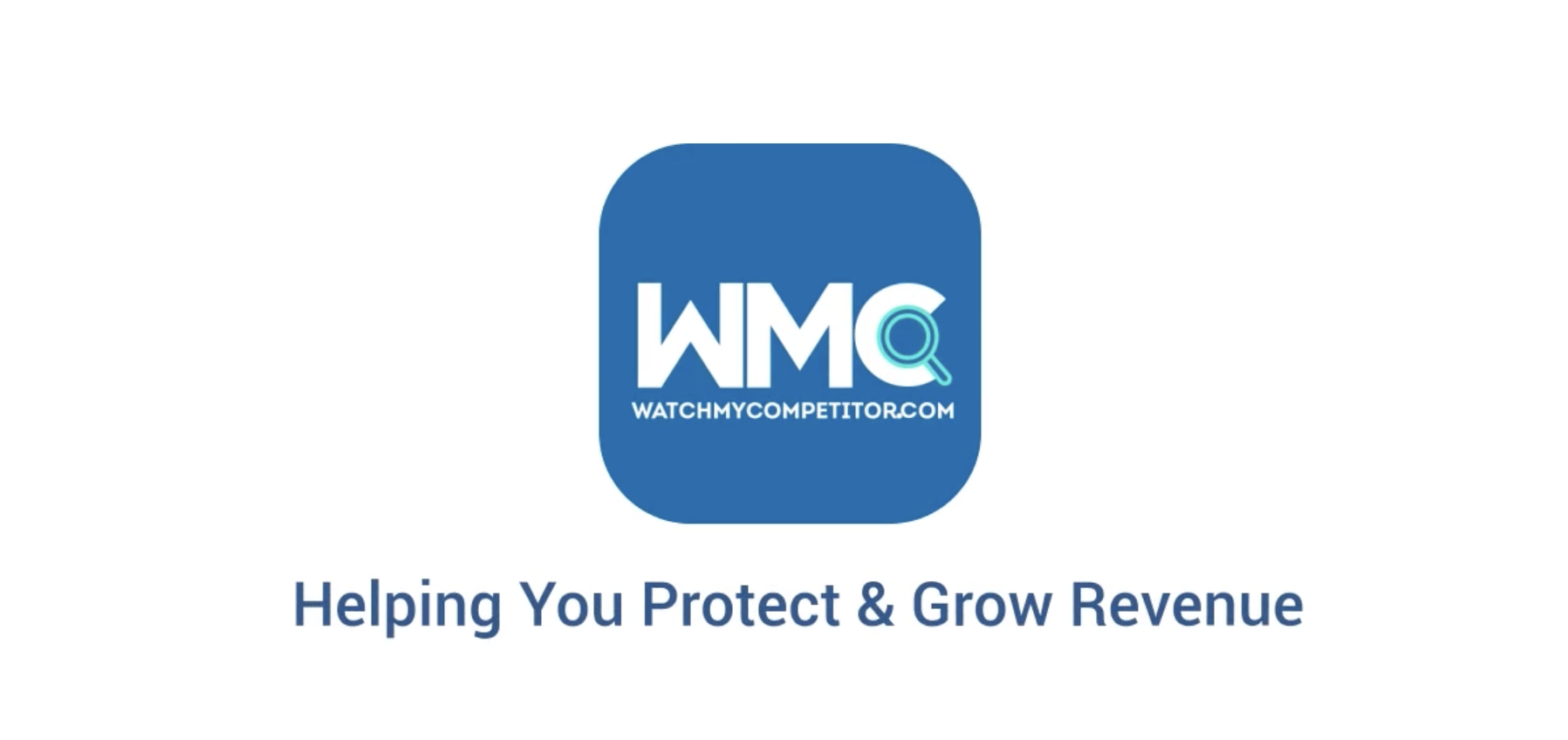In a fast-moving, highly-competitive industry, how do you stay ahead of the competition? How do you protect your market share or make up ground on those leading the way? It takes consistently good decisions to make meaningful progress. Yet only 57% believe their organisations achieve this.
It also requires speed. In today’s digital age where organisations – or rather competitors – make strategic decisions on a daily basis – changing products, pricing and marketing tactics to gain an advantage – it doesn’t pay to be slow or reactive.
One of the ways to improve the quality and speed of your decision-making is to become better informed through the use of data and intelligence. In the last decade, the volume of data and information created, captured, copied and consumed worldwide has increased by 1,233%!
One use of data in business is competitive monitoring. Two-thirds of enterprises say their competitors are using this type of data to successfully differentiate themselves, while more than half of executives are actively monitoring potential competitors with a view to moving into new markets.

What Is Competitive Monitoring?
Competitive monitoring is the process of gathering and analysing data about your competitors and the broader market to provide invaluable insights. These insights are often referred to as ‘competitive intelligence’.
Instead of relying on guesswork, you gain access to essential information that allows you to make proactive, data-driven decisions. This knowledge is your key to maintaining a competitive edge and safeguarding your market position.
As the global data volume continues to soar, competitive monitoring’s significance becomes even more pronounced. It empowers organisations to harness this data effectively, fostering growth, innovation and long-term success.
How Does It Differ From Competitor Monitoring?
Competitor monitoring and competitive monitoring sound similar and are used interchangeably on a regular basis. However, they can be distinguished based on subtle differences in terms of focus and scope. Here’s an explanation of the two:
Competitor monitoring
Competitive monitoring
Focus: Specific to understanding and tracking the actions, strategies, strengths, and weaknesses of one or more direct competitors.
Scope: This often includes tracking things like product releases, marketing campaigns, financial performance, customer reviews, and other direct actions of competitors.
Objective: By closely monitoring competitors, a company can identify opportunities and threats, anticipate competitor moves and devise strategies to gain a competitive advantage.
Focus: Broader than competitor monitoring; it deals with understanding the entire competitive landscape or environment in which a business operates.
Scope While this might include tracking direct competitors, it also encompasses a wider view to understand market trends, emerging technologies, regulatory changes and other factors that can impact the competitive positioning of a company.
Objective: By understanding the broader competitive landscape, a company can innovate, adapt, and position itself better in the market to meet current and future challenges.
What Are The Benefits Of Competitive Monitoring
A) Stay informed and proactive
Knowledge is power. Competitive monitoring keeps you in the loop about your competitors’ strategies, market shifts and emerging trends. Instead of reacting to changes, you can proactively adjust your approach to stay ahead.
B) Identify opportunities and threats
By tracking your competitors, you can spot opportunities they might have missed. Conversely, you’ll also identify potential threats early on, allowing you to mitigate risks and protect your market position.
C) Enhance decision-making
Informed decisions are smart decisions. With a wealth of data at your fingertips, you can make strategic choices based on market realities, not assumptions. This precision can save resources and drive growth.
D) Tailor your strategy
Every business is unique. Competitive monitoring helps you fine-tune your strategy to align with your specific goals and strengths. Whether you’re aiming for market expansion or brand positioning, customisation is key.
E) Customer-centric approach
Understanding your competitors also means understanding your customers. Competitive monitoring reveals consumer preferences and pain points, allowing you to shape products, services and marketing efforts that resonate with your target audience.
F) Keep pace with market changes
Markets evolve. Competitive monitoring ensures you’re always up to date with the latest trends, technologies and consumer behaviours, giving you a competitive edge.
G) Maximise ROI
Efficiency is also important. With insights from competitive monitoring, you can allocate resources where they matter most. This prevents wastage and maximises your return on investment.
H) Foster innovation
Innovation thrives on information. By knowing what your competitors are doing, you can push the boundaries of creativity and lead your industry with groundbreaking solutions.
How Competitive Monitoring Is Utilised In Practice
Competitive monitoring serves as a versatile and indispensable tool across various industries. In this section, we’ll explore the practical applications of competitive monitoring, highlighting its diverse uses and benefits.
1) Across various industries
Competitive monitoring finds applications across the board. In the retail sector, businesses use it to track pricing strategies and product launches by competitors.
In the finance industry, it aids in monitoring market trends and competitors’ investment strategies. The healthcare sector benefits from tracking pharmaceutical developments and regulatory changes.
Regardless of your industry, competitive monitoring can provide critical insights to stay competitive.
Informing product development and innovation
One of the primary applications of competitive monitoring is in shaping product development and innovation. By closely observing competitors’ product launches and updates, businesses can identify gaps in the market.
For example, a tech company may spot features lacking in competitors’ products and use this information to enhance their offerings. This proactive approach fosters innovation and ensures that your products remain competitive.
Benchmarking against industry competitors
Competitive monitoring allows you to benchmark your performance against industry competitors. By comparing metrics such as website traffic, social media engagement, or customer satisfaction ratings, you gain a clear understanding of where you stand in the competitive landscape. This benchmarking process helps identify areas for improvement and sets realistic goals for your business.
Supporting market entry and expansion strategies
For businesses eyeing new markets or regions, competitive monitoring is an invaluable asset. It provides insights into local market conditions, customer preferences and competitor presence.
Through thorough analysis, you can identify potential barriers to entry, such as regulatory challenges or established competitors and develop strategies to overcome them. Whether you’re expanding within your current market or venturing into uncharted territory, competitive monitoring guides your decision-making process.
The Competitive Monitoring Process
Step 1: Define your objectives
Clearly outline your monitoring objectives. What specific aspects of your competitors and industry are you interested in? Understanding your goals is the foundation of successful monitoring.
Step 2: Identify key competitors
Determine who your main competitors are in the industry. This may include both direct competitors offering similar products or services and indirect competitors with overlapping target audiences.
Step 3: Select data sources
Choose relevant data sources, both online and offline, for gathering competitive intelligence. Online sources can include competitor websites, social media platforms, forums and news articles. Offline sources might involve industry reports, conferences and customer feedback.
Step 4: Gather data
Continuously collect data from selected sources. This can involve monitoring competitor websites for product updates, tracking social media for customer sentiment or attending industry events to gather information first-hand.
Step 5: Data analysis
The collected data needs careful analysis. Look for trends, patterns and insights that can inform your decision-making. This step is where you transform raw data into actionable information.
Step 6: Interpretation
Beyond analysis, interpretation is crucial. What do the findings mean for your business? How can you use this information to your advantage? Interpretation bridges the gap between data and strategy.
Step 7: Adjust your strategy
Based on your analysis and interpretation, make informed decisions to adjust your business strategy. This might involve refining products, changing marketing approaches or exploring new markets.
Step 8: Regular updates
Competitive monitoring is an ongoing process. Markets evolve, competitors change tactics, and customer preferences shift. Regularly update your monitoring approach to stay relevant and informed.
The Role of AI and ML in Competitive Monitoring
Artificial Intelligence (AI) and Machine Learning (ML) will play an increasingly vital role in competitive monitoring. These technologies can analyse vast datasets, automate data collection, identify patterns and even predict competitor strategies.
Enhanced data collection
AI-driven tools can continuously collect data from a wide range of sources with unparalleled efficiency and accuracy. This could include everything from social media to news articles to competitor websites.
Predictive analysis
Machine learning algorithms can identify patterns and correlations in competitors’ actions, allowing businesses to anticipate moves and respond strategically.
Competitor benchmarking
AI can provide real-time benchmarking against competitors. This offers immediate insights into where your business stands in comparison.
Customised alerts
AI-powered systems can generate custom alerts when specific competitor actions or market trends are detected, ensuring you never miss critical developments.
Final Thoughts On Competitive Monitoring
Competitive monitoring is an indispensable practice in today’s dynamic business landscape. It empowers businesses to stay informed, make informed decisions and proactively adapt to market changes. By identifying opportunities, mitigating threats, and maintaining a customer-centric approach, competitive monitoring paves the way for sustainable growth and a lasting competitive edge.








